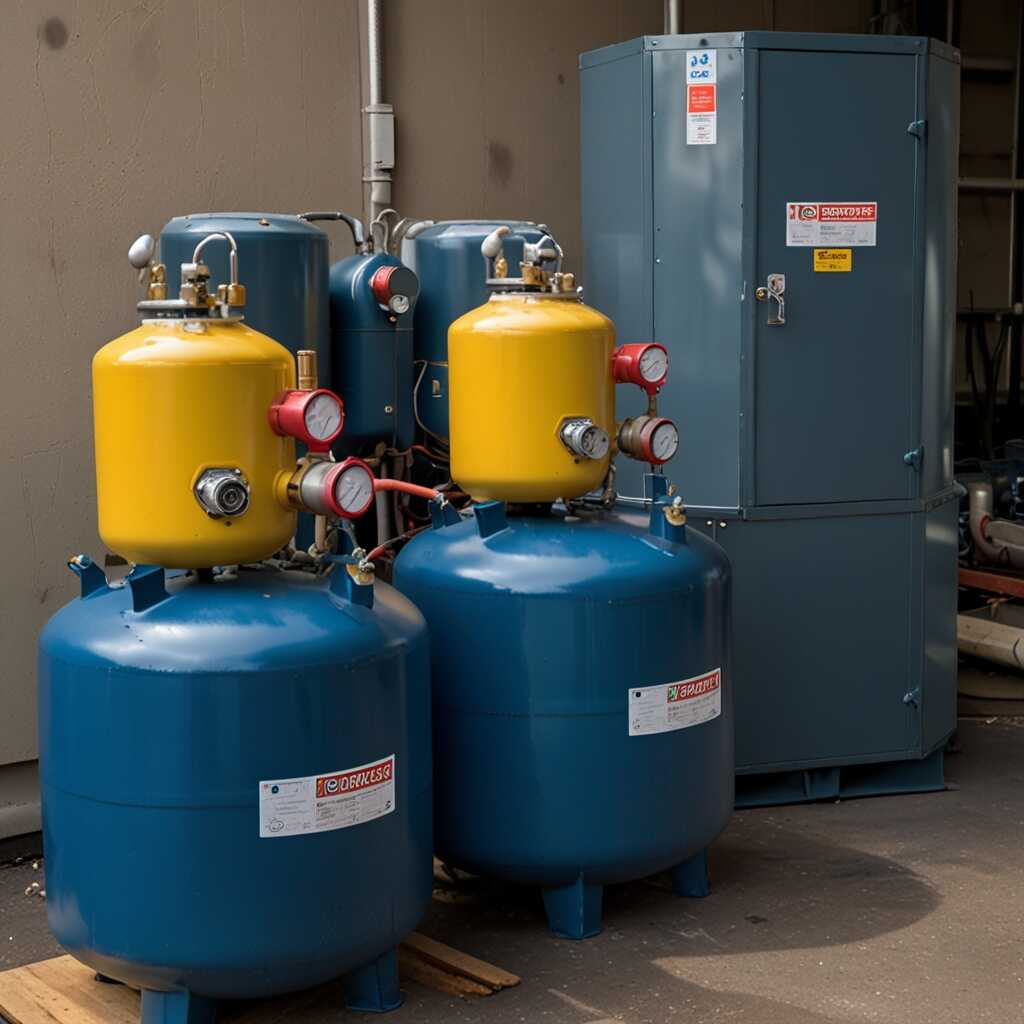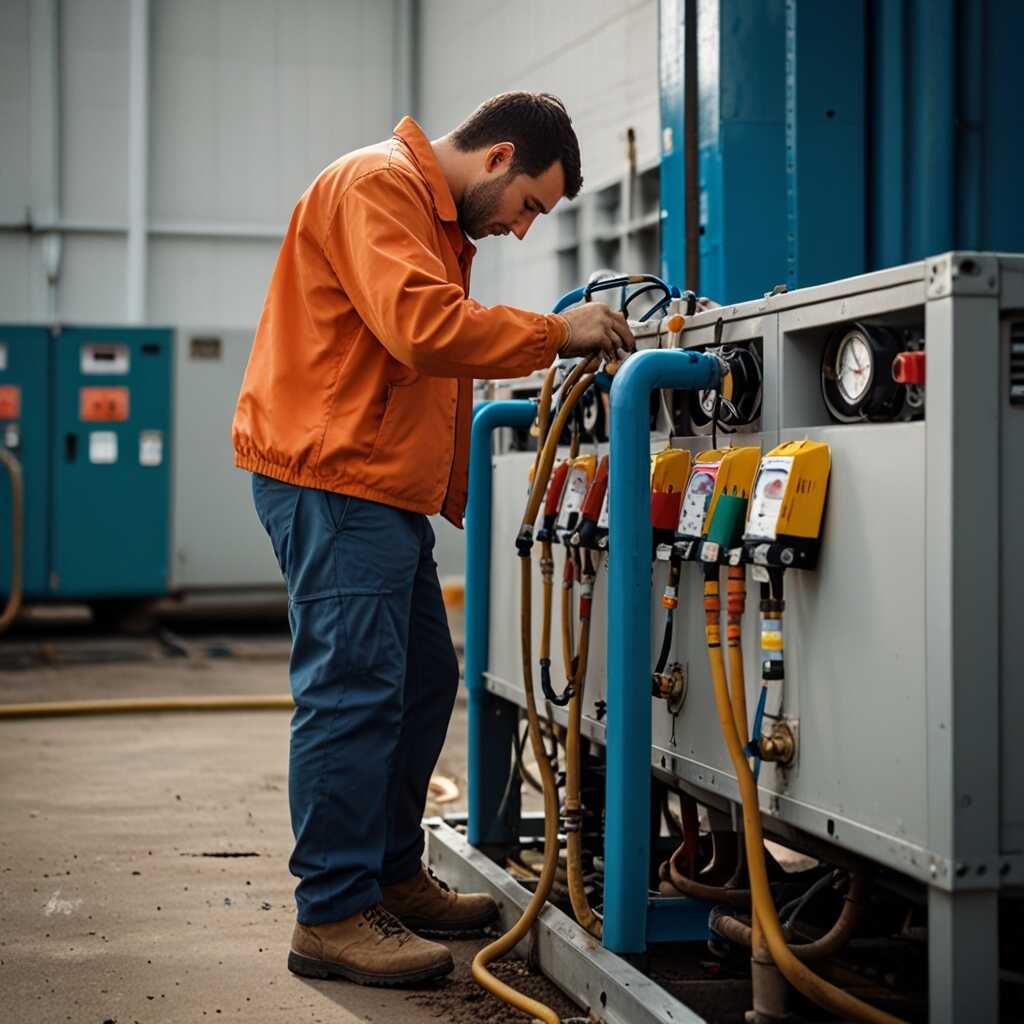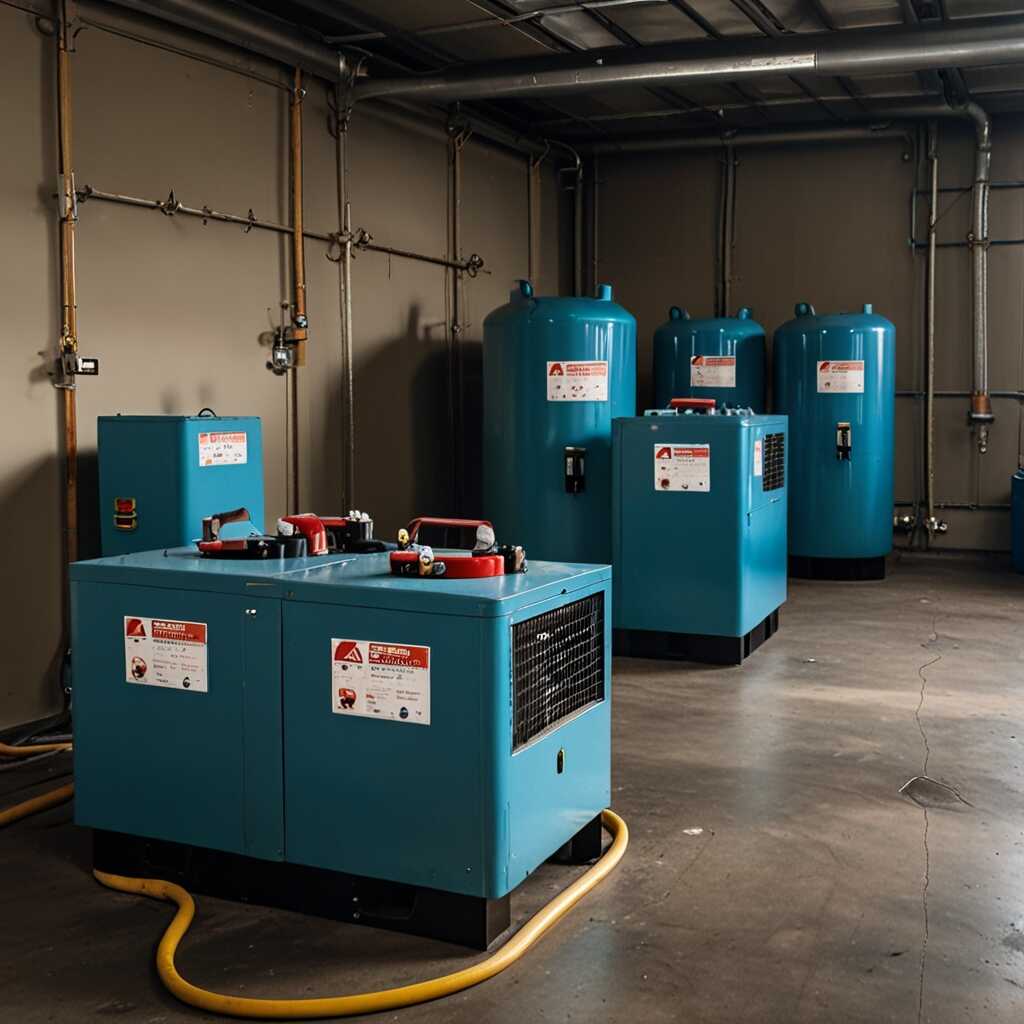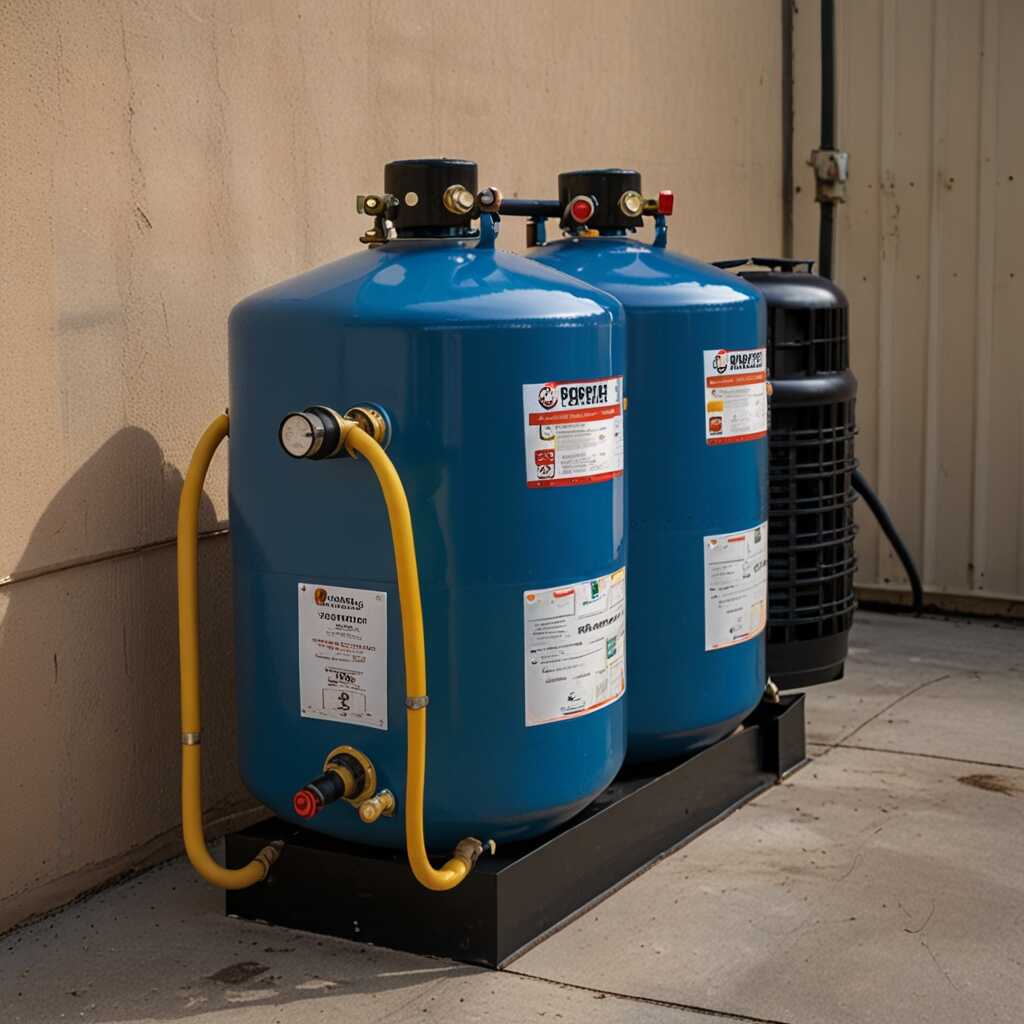Troubleshooting refrigerant recovery machine issues is crucial for reducing delays during service calls. Efficient handling of these common problems can save time and enhance productivity in HVAC operations. Refrigerant Recovery Pro equips HVAC technicians with the knowledge needed to tackle these challenges effectively and streamline their workflow. By utilizing expert guidance and technical support, technicians can ensure their refrigerant recovery machines operate smoothly, ultimately improving service delivery and client satisfaction.
Identifying Signs of Malfunction in Refrigerant Recovery Machines
Common signs of malfunction in refrigerant recovery machines include unusual noises, reduced suction ability, and excessive vibration. These issues can indicate problems with critical components such as compressor or recovery tank. Users should regularly check for refrigerant leaks, perform visual inspections, and ensure filters are clean to enhance reliability. Engineers and HVAC technicians must recognize malfunction signs quickly to improve service times.
Understanding Key Components Impacting Machine Performance
Key components significantly impact refrigerant recovery machine performance. The compressor, recovery tank, and vacuum gauge play essential roles in efficiency. A failing compressor can dramatically reduce refrigerant recovery efficiency. Regularly reviewing these parts can prevent downtime. Additionally, maintaining proper connections and hoses impacts overall machine performance. Using high-quality materials helps ensure durability and reliable operation, supporting technicians in quicker troubleshooting.
Common Reasons for Failed Refrigerant Recovery Procedures
Common reasons for failed refrigerant recovery procedures include equipment malfunction, improper setup, and inadequate training. Equipment maintenance issues, such as worn hoses or defective valves, significantly impact recovery efficiency. Technicians must review their refrigerant recovery equipment regularly, ideally before each job, to ensure reliability and performance. This practice minimizes common troubleshooting issues and helps technicians avoid downtime during service calls.
Equipment Malfunction and Maintenance Guidelines
Equipment malfunction often arises from overlooked maintenance. Technicians should focus on checking the recovery machine’s pressure gauges, filters, and seals. Dirty filters can reduce efficiency and lead to compressor damage. Routine testing and maintenance prolong equipment life and enhance reliability. Technicians should replace worn hoses immediately, as they can hinder refrigerant flow and affect results. Regularly reviewing units according to the manufacturer’s specifications ensures optimal performance and avoids costly repairs.

Assessing Compatibility of Recovery Equipment with Refrigerants
To verify equipment compatibility with refrigerants, carefully review the manufacturer’s specifications. Ensure the recovery machine is designed to handle the specific refrigerant type. Check for the correct seals, oils, and materials that comply with the refrigerant’s chemical properties. Understanding these details enhances the reliability of the recovery process. With common refrigerants like R-410A, R-22, and R-134a, differences in pressure, oil compatibility, and maintenance requirements are significant. R-410A, for instance, requires higher pressure ratings than R-22. Recovery machines must typically handle a maximum operating pressure often exceeding 400 psi to ensure safe and effective refrigerant recovery.
Understanding Key Refrigerant Types and Their Equipment Requirements
Different refrigerants have unique characteristics that affect their compatibility with recovery machines. For example, R-410A operates at much higher pressures compared to R-22, which can impact system performance. While R-22 is compatible with mineral oils, R-410A requires specific polyolester oils, making equipment selection crucial. HVAC technicians must ensure they use machines that can effectively manage these differences. Using the wrong equipment can lead to inefficient recovery and potential damage. Regular equipment reviews and testing based on proven data can provide important insights into equipment capability.
Key Figures in Refrigerant Management and Repair
- 77% of HVAC technicians report issues with refrigerant recovery machines.
- 50% of service calls experience delays due to machine malfunctions.
- 3-5 minutes are often needed to troubleshoot simple problems.
- 70% of recovery machine issues relate to improper setup and usage.
- 85% of technicians believe training enhances troubleshooting efficiency.
- Average lifespan of a refrigerant recovery machine is between 5-10 years.
- 1 out of every 4 recovery machine issues requires professional support.

Diagnosing Refrigerant Line Blockages and Leakage Issues
Identifying blockages in refrigerant lines requires visual inspections and testing with gauges. Look for signs of frost buildup on the lines, which indicates a blockage. Also, use pressure testing to confirm if the system is functioning properly. Common causes leading to leaks in refrigerant lines include wear and tear, improper installation, and physical damage. According to industry standards, the maximum allowable leak rate for refrigerants like R-410A is typically 0.5% per year. Regular checks improve refrigerant efficiency and system reliability.
Effective Methods for Leak Detection
Effective leak detection methods include using electronic leak detectors and bubble testing. Electronic leak detectors can sense refrigerant gases even at very low concentrations. This method is fast and reliable, ensuring accurate detection. Bubble testing involves applying a soap solution to suspected leak areas and observing for bubbles. Both methods are essential for maintaining HVAC system performance and enhancing refrigerant efficiency. Regular testing schedules help HVAC technicians identify issues early, improving overall system reliability and longevity.

Identifying Electrical Faults in Recovery Machines
Common electrical issues in recovery machines include faulty wiring, blown fuses, and malfunctioning control boards. Recognizing these problems helps in diagnosing and expediting repairs. Users can effectively diagnose these issues by checking connections, using multimeters for continuity tests, and ensuring the machine’s fuses are intact. Many recovery machine models share similar designs, so understanding universal electrical components can enhance troubleshooting methods. Data shows that around 30% of all recovery machine repairs involve electrical faults. Addressing these issues promptly improves recovery machine reliability.
Steps for Troubleshooting Electrical Issues
To troubleshoot electrical issues in recovery machines effectively, first power off the unit to ensure safety. Inspect all visible wiring for wear or damage. Use a multimeter to check the voltage at critical points, including the power supply and control circuit. If the machine uses PWM (pulse-width modulation) for motor control, ensure the signal is present. Reviewing the machine’s manual for specific sequence operations can be beneficial. Each recovery machine model may have unique electrical features; understanding these enhances your capability to resolve faults swiftly. Proper testing and diagnostics can significantly reduce downtime and improve overall operational efficiency.
Advantages of Quick Repairs and Maintenance
- Improved customer satisfaction due to faster service delivery.
- Reduced downtime for technicians enhances workflow efficiency.
- Increased technician confidence in handling machine issues.
- Solving refrigerant issues quickly promotes safety in operations.
- Lower overall costs through fewer service call backs.
- Enhanced reputation for HVAC service companies.
- Boosted productivity and profitability for HVAC businesses.

Best Practices for Maintaining Refrigerant Recovery Equipment
Essential maintenance tasks for refrigerant recovery equipment include regular cleaning, checking for leaks, and maintaining proper oil levels. Conduct tests to verify that machines can handle the refrigerants they are designed for. Ensure that all seals and hoses are undamaged to enhance their performance. A consistent maintenance schedule minimizes troubleshooting incidents and contributes to reliability. Regular evaluations, such as visual inspections and functional tests, provide data on machine performance. Testing should occur at least every six months to ensure the equipment maintains reliable performance.
Understanding the Importance of Routine Maintenance for Optimal Functionality
Routine maintenance is vital for enhancing the operational efficiency of refrigerant recovery machines. A well-maintained machine provides consistent results and reduces the likelihood of breakdowns. In-depth checks, such as verifying refrigerant recovery rates and pressures, enable technicians to identify issues early. Documentation of maintenance history helps in comparing equipment performance over time. Keeping a log of service tasks also assists in predictive maintenance, ensuring machines operate at peak efficiency.
Effective Diagnostic Tools for Quick Problem-Solving
Key diagnostic tools for refrigerant recovery machines include pressure gauges, infrared thermometers, and electronic leak detectors. These tools help HVAC technicians quickly identify issues and determine whether the recovery machine is functioning correctly. For instance, using a pressure gauge allows for immediate feedback on the refrigerant level in the system, enabling technicians to quickly assess performance. Comparisons of various refrigerant recovery machines show differences in reliability and efficiency. Models designed for high-performance often include efficiency features that reduce the time needed for recovery. By employing these diagnostic tools effectively, technicians can expedite service calls, enabling them to handle more appointments in a day.
Choosing the Right Diagnostic Equipment for Efficient Repairs
Choosing the right diagnostic equipment enhances the speed and accuracy of repairs on refrigerant recovery machines. Opt for pressure gauges with digital displays for clearer readings and infrared thermometers that offer non-invasive temperature checks. These tools provide essential data that improve troubleshooting processes. Review your equipment regularly for reliability to ensure it meets the demands of your HVAC service. Performance metrics can identify durable models that withstand demanding environments. Exploring recent reviews of recovery devices is also beneficial to know which models offer excellent troubleshooting reviews for current systems in 2025. Reliable diagnostic tools can handle the challenges of refrigerant recovery, leading to increased service efficiency.
Brands and Their Suitability for Professionals
- Robinair: Known for robust recovery machines but can be pricey.
- Yellow Jacket: Offers reliability with simple operation; however, not all models are portable.
- Appion: Provides lightweight models; however, they may lack advanced features.
- Inficon: Easy to use with good support resources but often has a steeper learning curve.
- RecoverX: Known for budget-friendly options, yet it may compromise on durability.
- Brand selection often depends on technician experience and specific job requirements.
- Environmental regulations often influence brand preference among HVAC professionals.
When to Consider Professional Assistance for Complex Issues
HVAC technicians should consider seeking professional assistance when they encounter persistent refrigerant recovery machine issues that impede efficiency. Equipment failures like persistent leaks, inconsistent pressure readings, or unusual noise are signs that expertise is needed. If a technician has tried multiple troubleshooting steps without success, consulting Refrigerant Recovery Pro can enhance operational efficiency. Complex equipment problems can arise from improper installation, lack of maintenance, or even a need for specialized tools. It’s essential for technicians to know when their efforts are insufficient and expert intervention is warranted.
Identifying Signs of Equipment Failure
HVAC technicians must be adept at identifying signs of equipment failure. Notable indicators include erratic performance, unusual sounds during operation, and failing pressure gauges. Technicians should conduct reliable testing to gather data before contacting experts. A clear inspection can reveal if the refrigerant recovery machine requires professional attention due to components that are worn or damaged. Engaging professionals promptly can reduce downtime and improve overall service quality in HVAC operations.